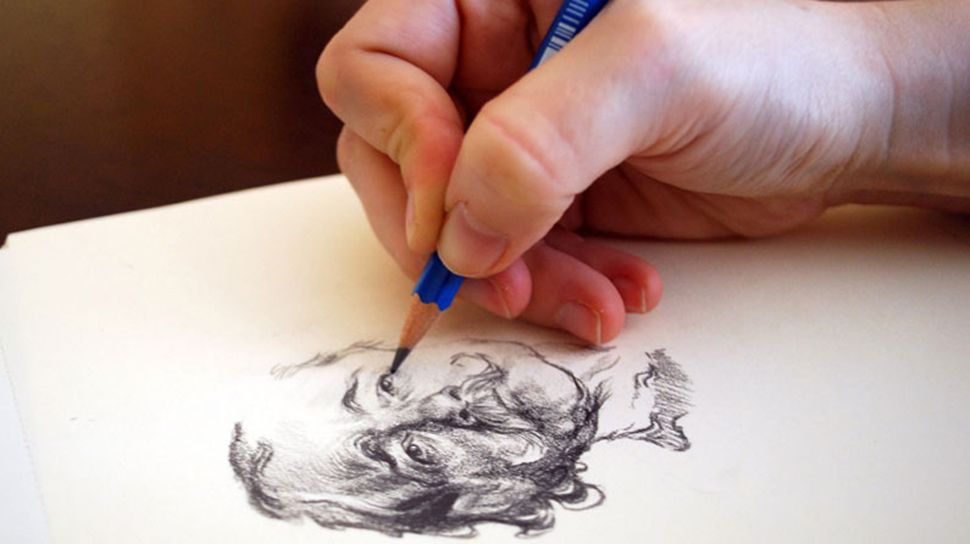With enthusiasm, let’s navigate through the intriguing topic related to Let’s Get Creative! A Beginner’s Guide to Drawing. Let’s weave interesting information and offer fresh perspectives to the readers.
Introduction
Let’s Get Creative! A Beginner’s Guide to Drawing

Hi there, young artist! I’m so excited to embark on this drawing adventure with you. Drawing is a wonderful way to express yourself, explore your imagination, and learn about the world around you. It’s like magic, turning simple lines into amazing pictures!
Before we dive into drawing, let’s talk about what you’re interested in drawing. Are you excited to draw animals, landscapes, or maybe even your favorite superhero?
The Magic of Drawing
Drawing isn’t just about making pretty pictures. It’s a powerful tool that can help you in many ways:
- Boosts Creativity: Drawing lets your imagination run wild! You can create anything you can dream of.
- Improves Observation Skills: Drawing teaches you to look closely at the world around you, noticing details you might miss otherwise.
- Develops Problem-Solving Skills: Drawing is like a puzzle. You need to figure out how to put lines and shapes together to create the image you want.
- Enhances Hand-Eye Coordination: Drawing helps your hands and eyes work together smoothly, improving your dexterity and control.
- Expresses Emotions: Drawing can be a way to express your feelings, even when words are hard to find.


Getting Started: Your Drawing Toolkit
To start our drawing journey, you’ll need a few simple tools:
- Paper: Any kind of paper will do, but drawing paper is best because it’s smooth and takes pencil marks well.
- Pencils: You’ll need a few pencils with different levels of darkness. A soft pencil (like a 2B or 4B) will create dark lines, while a harder pencil (like an HB or 2H) will create lighter lines.
- Eraser: This helps you erase mistakes and make corrections.
- Sharpener: Keeps your pencils sharp for precise lines.

Building a Strong Foundation: Basic Drawing Techniques

Now, let’s learn some basic drawing techniques that will help you create amazing pictures:
-
Lines: Lines are the building blocks of drawing. Practice drawing different types of lines: straight, curved, wavy, and zig-zag. Try drawing them lightly at first, then go over them with a darker line.
-
Shapes: Shapes are made up of lines. Practice drawing basic shapes like circles, squares, triangles, and rectangles. You can also combine shapes to create more complex forms.
-
Shading: Shading adds depth and dimension to your drawings. Use your pencil to create different shades of gray by applying more or less pressure. Start with light shading and gradually add darker shades to create highlights and shadows.
-
Perspective: Perspective helps you create the illusion of depth in your drawings. There are different types of perspective, but the simplest is one-point perspective, where all lines converge at a single vanishing point on the horizon.

Let’s Draw a Cute Animal!
Now that you’ve learned some basic techniques, let’s try drawing a cute animal together. How about a playful puppy?
-
Start with a Circle: Draw a circle for the puppy’s head.
-
Add the Ears: Draw two floppy ears on top of the circle.
-
Draw the Body: Add a curved line below the circle for the puppy’s body.
-
Add the Legs: Draw four short legs with little paws.
-
Draw the Tail: Add a wagging tail.
-
Add Details: Use your pencil to add details like eyes, nose, mouth, and fur.
-
Shade: Use shading to add depth and dimension to your puppy. Make the fur look fluffy!
FAQs: Your Drawing Questions Answered
Here are some common questions about drawing:
-
What if I make a mistake? Don’t worry! Mistakes are part of the learning process. Just use your eraser to fix them and keep practicing.
-
How do I draw things that look realistic? Practice observing the world around you. Pay attention to shapes, shadows, and light. You can also use reference photos to help you.
-
How can I improve my drawing skills? The best way to improve is to practice regularly. Draw every day, even if it’s just for a few minutes. Also, don’t be afraid to experiment with different techniques and styles.
-
What should I draw? Draw anything that interests you! Draw your favorite animals, places, people, or even your own imaginary creatures. The most important thing is to have fun!
-
What if I don’t think I’m good at drawing? Everyone starts somewhere. Don’t compare yourself to others. Just focus on enjoying the process of creating. The more you practice, the better you’ll become!
Remember, drawing is a journey, not a race. Have fun, be patient, and keep exploring your creativity!
I’m excited to see your amazing drawings! Let me know if you have any questions or need help with anything. Keep drawing, and let your imagination soar!

Thus, we hope this article has provided valuable insights into Downloads Let’s Get Creative! A Beginner’s Guide to Drawing. We hope you find this article informative and beneficial. See you in our next article!
 cryptonias.my.id News Bisnis Technology Tutorial
cryptonias.my.id News Bisnis Technology Tutorial